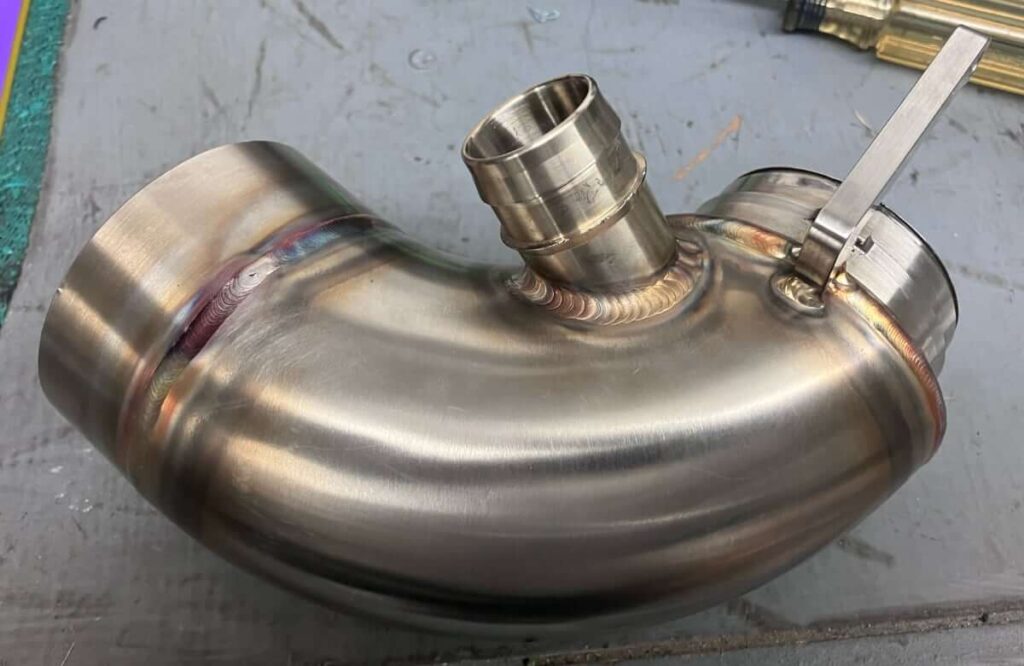Background:
The last post discussed the results of logging the GTI in cooler weather with an APR PEX intake and then a modified stock intake.
In this post, I discuss swapping to the Blaze Performance ATOM Race V2 intake and logging the GTI’s performance.
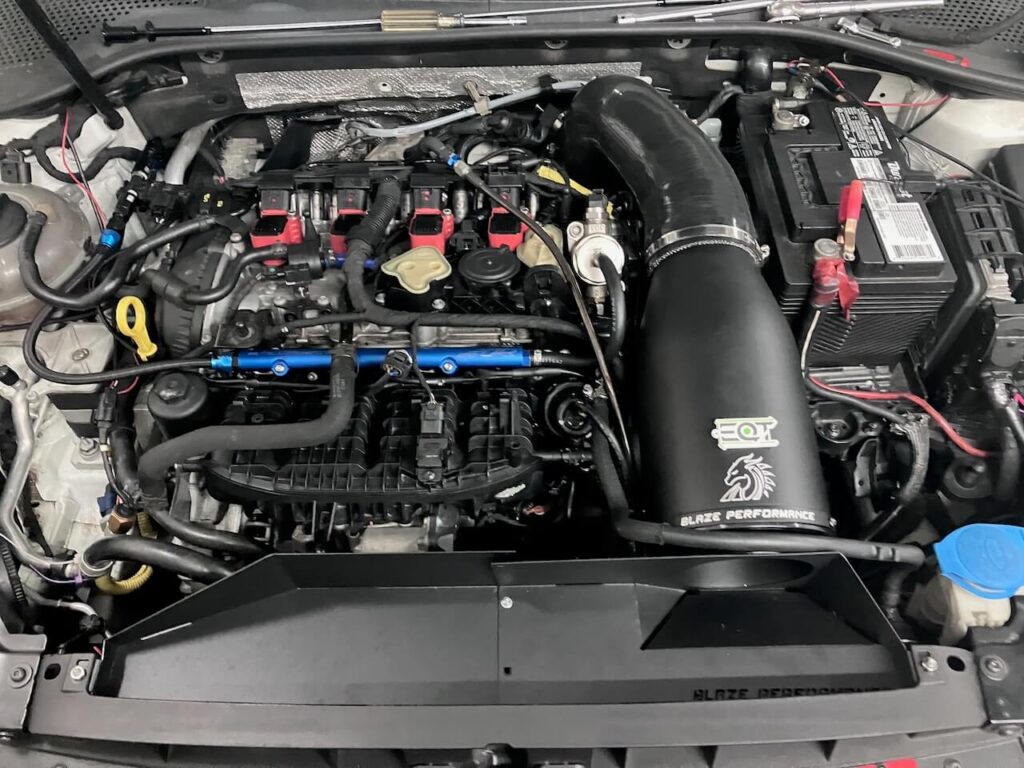
The following are benefits attributed to this intake from the North American distributor:
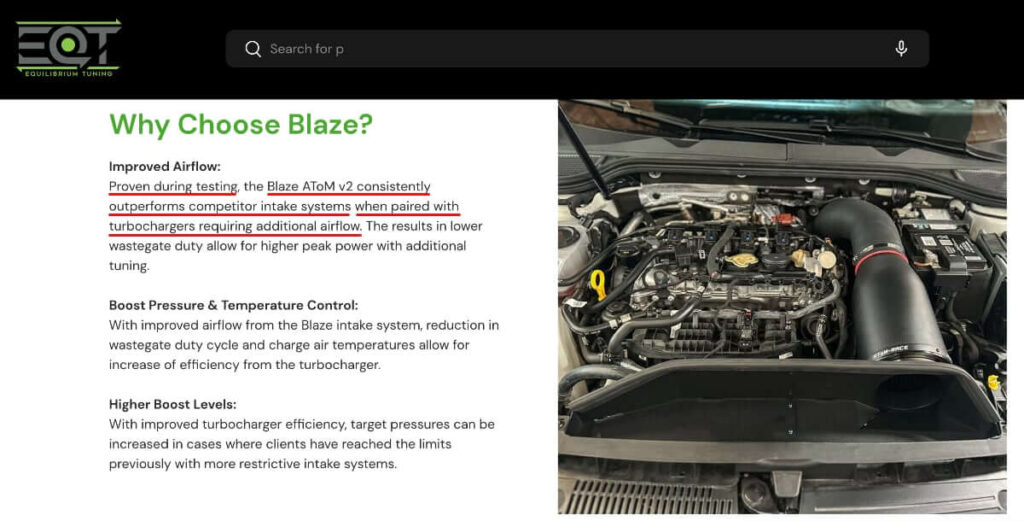
The GTI’s current Mabotech M520 turbocharger, operating at 34 psi of boost pressure, meets the criteria for a turbocharger “requiring additional airflow.”
EQT claims the Blaze ATOM outperforms competitor intake systems. Therefore, any competing product outperforming the Blaze ATOM would disprove this claim. For this post, the bar will be set low, and the Blaze ATOM will be compared with a modified stock GTI intake.
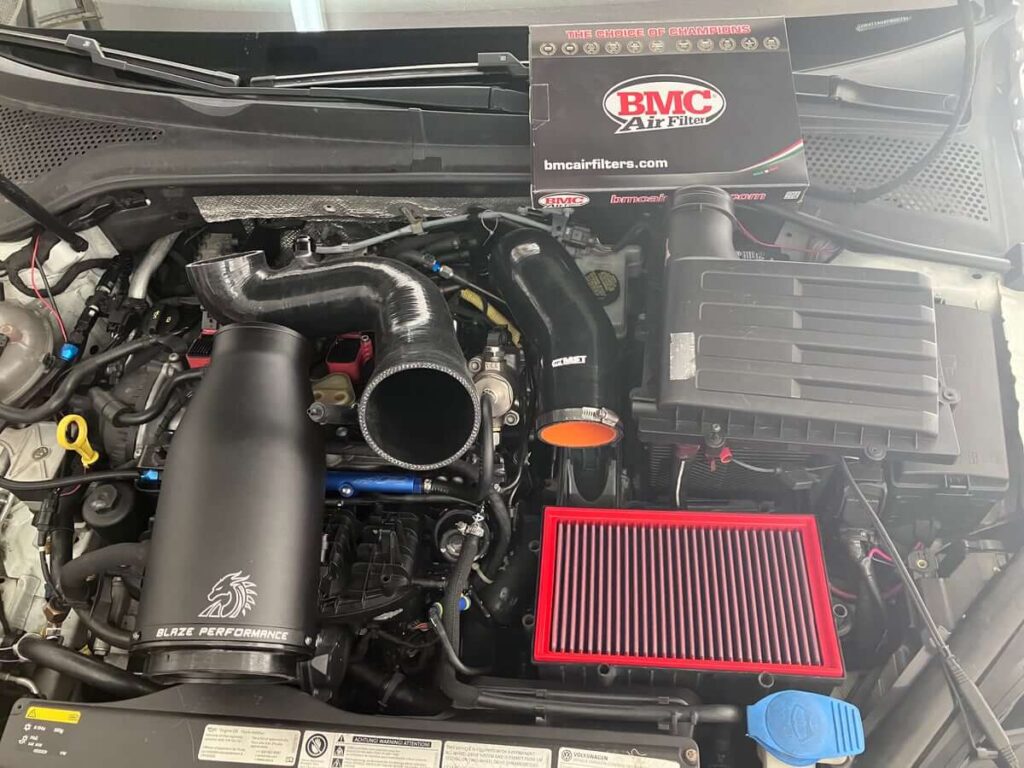
Test Process:
EQT’s claim identifies the turbocharger wastegate duty cycle and the charge air temperature as the variables of interest.
The wastegate duty cycle is straightforward to record and analyze, and I will use SimosTools logger to record this value, but charge air temperature is significantly more challenging to compare. This is partly due to heat soaking of the turbocharger compressor housing, which presents challenges for repeatability, and the car’s lack of organic sensing capability.
EQT fails to present evidence of what they base their claim of reduced charge air temperatures on; presumably, this performance claim is made up. This value will not be measured in this test.
The Blaze ATOM Race intake is attached to the Mabotech turbocharger using the Blaze 56 mm flange adapter.
The modified stock GTI airbox has the air duct open on the front driver’s side and covered on the rear passenger’s side. The air baffle/snow guard has been removed, and a BMC panel filter replaces the OEM Mann air filter. The MST Performance turbo inlet hose and V2 turbo inlet elbow join the airbox to the turbocharger.
The process for obtaining data involves operating the GTI in the fourth (4th) gear and going full throttle at around 2,000 RPM. Full throttle is maintained until approximately 6,500 RPM.
The location, operating on the same stretch of road, and the outside air temperature are critical environmental conditions to control.
Test Results:
The outside air temperature during the recording of the two sessions differed by approximately 1 degree Fahrenheit, as shown on the chart.
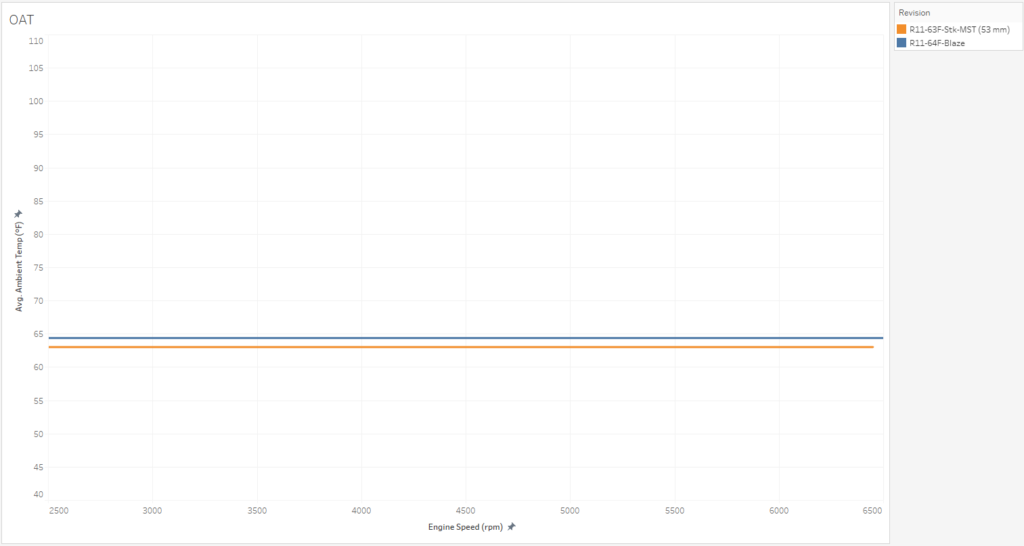
The intake air temperature was approximately the same during each session, as shown below.
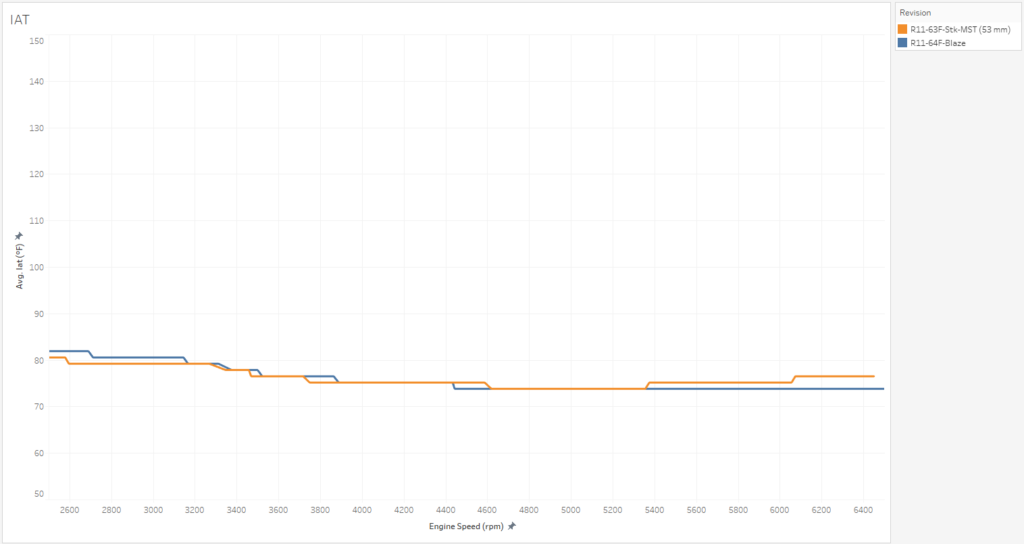
Note: While the intake air temperature after the intercooler is “charge air,” a term referenced in the EQT advertising, the significant contribution the intercooler makes on the post-intercooler charge air temperature makes this value useless for comparing the effect of the intake system pressure losses on turbo compressor operation.
The turbocharger operating boost pressure is approximately the same up to an engine speed of roughly 5,400 RPM, after which it is approximately 0.4 psi higher with the Blaze ATOM intake.
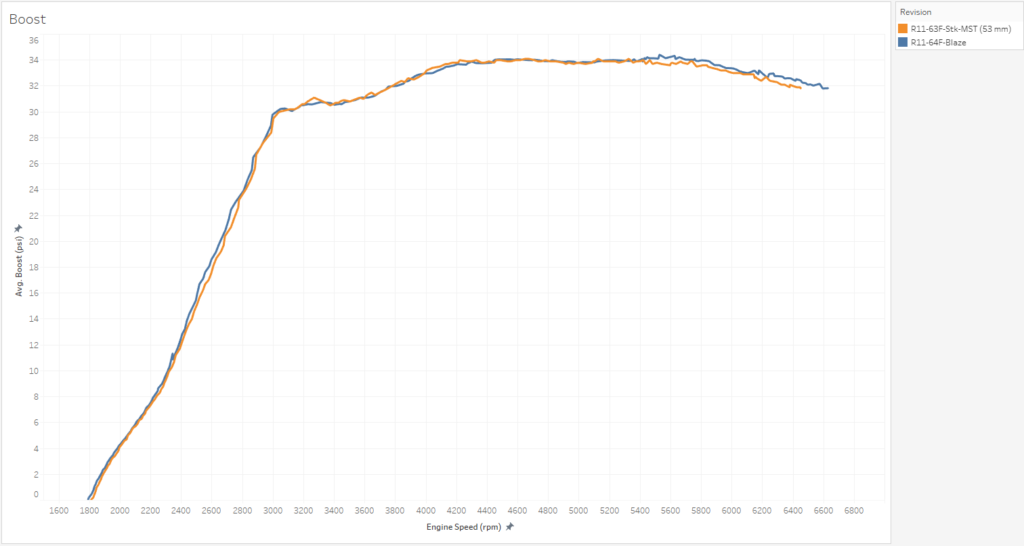
Matching with the boost curves, the intakes have a similar wastegate duty cycle (WGDC) until approximately 5,500 RPM, after which the Blaze intake has a lower wastegate duty cycle by approximately 10%.
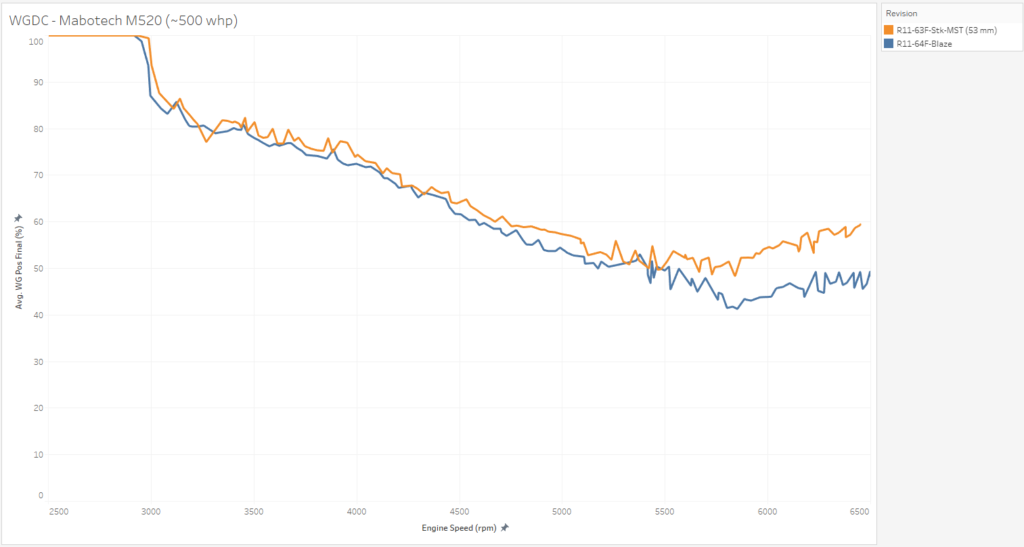
Conclusions:
The Blaze ATOM Race V2 intake was compared with a modified stock GTI airbox using a Mabotech M520 turbocharger operating at 34 to 32 psi.
The turbocharger’s boost pressure output was equal for both intakes until approximately 5,400 RPM, after which the Blaze intake correlated with a 0.4 psi higher boost pressure.
The wastegate duty cycle between the intakes trended similarly, showing close similarity until approximately 5,500 RPM, after which the Blaze intake WGDC was approximately 10% lower than the modified stock GTI intake.
This result supports EQT’s claim that the Blaze ATOM outperforms a competitor’s intake. However, it is unknown if EQT references the stock GTI intake as a “competitor intake” since EQT is not competing against Volkswagen Group.
Next step:
The similar performance of the turbocharger using these two intakes until high engine speeds are reached indicates that the pressure loss caused by these intakes is also similar.
A physical advantage the Blaze ATOM with a 56 mm flange has over the modified stock intake is the diameter of the flange’s outlet (inlet elbow). The MST V2 elbow has a 53 mm outlet.
The Mabotech M520 turbocharger’s compressor inlet is 60 mm at the opening and tapers inward through a velocity stack.
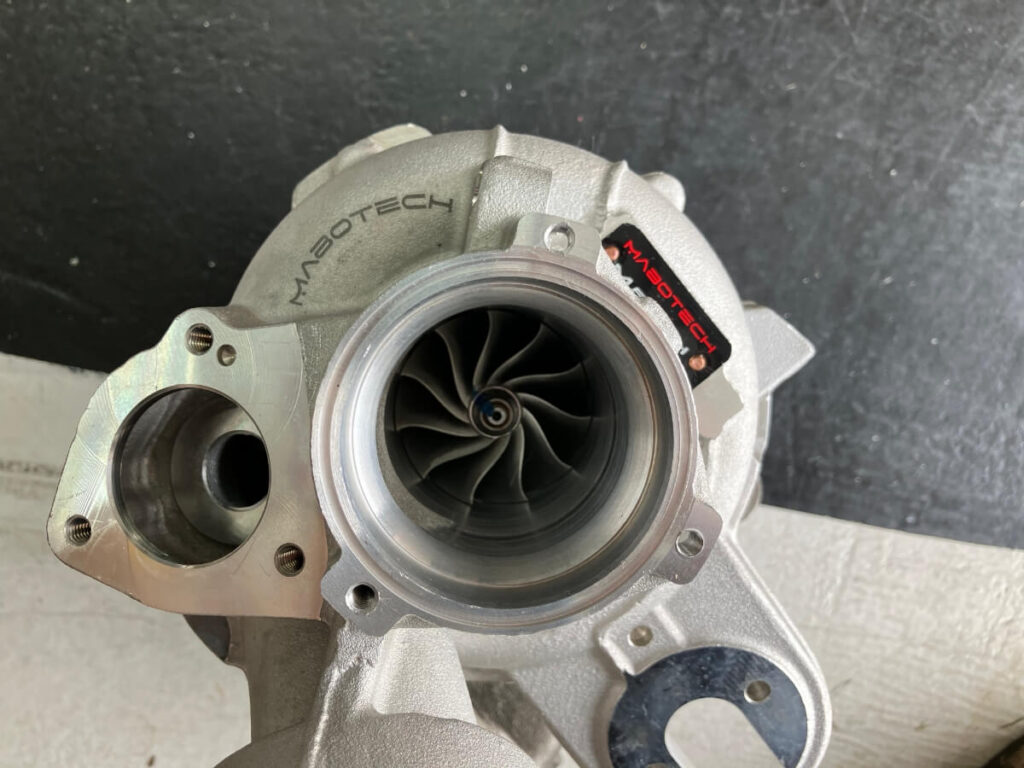
Because the Blaze ATOM flange utilizes more of the available cross-section, 56 mm of the 60 mm versus 53 mm of the 60 mm by the MST V2, a logical question is how the modified stock intake would perform if matched with a turbo inlet elbow that takes better advantage of the available cross-section.
The DBV2 turbo inlet elbow has an outlet diameter of 55.3 mm. This is a closer match with the Blaze ATOM and will serve as the following product tested.
